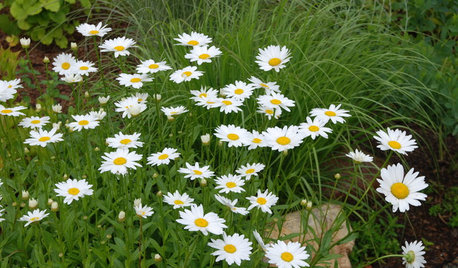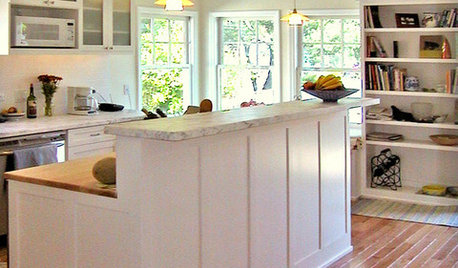A Brief Intro to Composting
Types of Composting
The first question many beginners ask is 'What is the best bin?" The first question should be, "What do you want to do?"
Look at what materials you want to get rid of or have access to, and how much compost you want or need. Once you know what materials you have available or can scrounge you can decide on what type of bin is appropriate.
A variety of manufactured bins are available; many do not work any better than cheap do-it-yourself types. There are many informational sites that have detailed drawings in building any type of setup you might need.
Some of the most common are:
Pallet Bin
The cheap way to get started could be a square bin made of salvaged wooden palettes wired or screwed together. Pallets are easy to come by and make sturdy containment areas.
Wire Mesh Bin
Round bins made of hardware cloth are also very simple, cheap and effective. Diameters of three to five feet are best. Just get some sturdy utility fence material and form it into a cylinder. Use some zip ties or just twisted wire to hold the ends together. You can line the inside with breathable landscaping fabric or even plastic sheeting to help retain the moisture. Fold the top edge over and secure it with clothspins or binder clips or even staples.
Rotating Tumbler
Tumblers advertise quick and easy compost but beginners often have problems with them. For best results, tumblers require filling at one time, and carefully measuring the moisture and green/brown ingredients. They are a poor choice to start with unless you are willing to devote considerable effort to monitoring the inputs. After some experiance you may choose to add a tumbler as an addition to your efforts.
Odors and animal pests are often a source of worry for beginners but proper understanding can eliminate problems. A proper balance of browns mixed in with the greens will keep the pile from smelling sour. Kitchen scraps should be buried in the middle of the pile - if they are added close to the surface they may draw pests. Problematic materials like fish should be buried deep or used in a special pile.
The three major methods to compost are:
An Bin
Hot or Cold. Slow or Fast. Pile it and Let it Rot or Turn and Tend Regularly. The options are endless. This is the method that is most commonly used and is one of the most fool proof. Pile in your ingredients and nature takes it from there. The amount of care and work you put into the process determines your results somewhat, but even if you do nothing time will eventually reduce the pile to compost. Dust to dust and all that.
A size of 3' x 3'b x 3' is said to be the minimum to get things to heat up for the best result. A hot pile is NOT required for the materials to break down. Heat does speed up decomposition, but requires more frequent turning and water. Microorganisms cause breakdown at temperatures between 50F and 158F. One reason for desiring hotter temperatures is to kill any weed seeds that may be present.
Moisture and air are also necessary for composting. The hotter the pile, the more often it should be turned over to let air in. Heat dries out the pile core quicker. In hot dry climates you may want to wrap somthing around open compost piles. Covering the pile is a personal choice but a top of some kind will prevent rapid drying out of the pile and help to reduce leaching out of the nutrients. The location of a compost pile in sunny or shady areas of a yard does not really matter. The heat build up is provided by the microbial activity going on inside.
Vermiposting
A worm bin. A good choice for those with limited space, and fisherman. Makes small quantities but the material is VERY high quality. In colder climates, this should be done indoors since the worms work best between 50F and 90F."
A good means of recycling food scraps.Lasagna or Sheet Composting
Also known as "Interbay Mulch". This involves putting the materials directly on the beds to be enriched. Simple and cheap, this is a very "low impact" method. There are many folks just rediscovering and improving on this method that has been called a number of things in the past.
Layer a mix of greens and browns as if making lasagna and let it sit and decompose in place. This is a great method of putting vegetable beds "to sleep" for the season ensuring a rich fertile bed for the next seasons planting.
You can also use this method to prep grassy areas and transform them to planting beds.
The Compost Mixture
Some of the benefits of composting are reduction in diseases and wilts; a slow release of nutrients, moisture conservation, and improved tilth. It promotes a greater diversity of soil organisms that serve to "innoculate" your plants from a number of problems.
It can be applied in a number of different ways. Mixed in as an ammendment, top dressing for slow realease and mulching benifit, even made into "tea" as a root feed or tonic.
The process of composting is the breaking down by bacteria, mixtures of nitrogen-rich materials aka "Greens" with carbon-rich materials aka "Browns".
Examples of "Greens/Nitrogen Rich" things would be: freshly cut grass, used coffee grounds, seaweed, spent flower blooms,tea leaves or vegetables and peelings.
Basicly most organic, growing things that are still fresh and moist.
Examples of "Browns/Carbon Rich" things would be: paper, fall leaves, straw, sawdust, shredded newspaper or woodchips.
Basicly any dry or woody/twig types of things.
Ingredients not suitable for composting are oil, grease, bones, fat, and diseased plants.
Folks often ask where they can find materials to compost. The short answer is EVERYWHERE. But for the sake of clarity the very incomplete list below offers a few sources. As with everything in life, balance is good so go for several different items on this list.
Good browns, all readily available, most for free
Old 100% cotton clothes especially whites w/ no dyes.
Laundry lint from drying cotton clothes (don't include any fabric softener sheets)
Floor sweepings
Black and white newsprint (preferably shredded - goes quicker - and preferably printed w/ soy-based ink - no heavy metals...)
Brown paper bags from grocery store
Torn/shredded carboard: brown boxes, brown packing tubes, toilet paper and paper towel rolls, tubes egg cartons (avoid printed, glossy or refined looking boxes, etc: cereal boxes would be bad, generic brown shipping boxes good)
Cotton-based and paper-based kleenexes and paper towels
Aged twigs: break 'em up as small as you can
Aged wood chips (smaller and older the better)
Sawdust from untreated lumber (check with a lumber yard)
Wood ashes in VERY SMALL doses. Not barbecue charcoal ashes though!!! Too many heavy metals and carcinogens. Throw BBQ ashes in the trash and don't dump anywhere on your, or anyone else's, property.
Straw
Dried grass: either mow and dry or rake up dead grass from the lawn
Dead leaves(though not those from diseased plants)
Greens that are easy to find
Grass clippings: These will mat together so mix well with the browns as you add to the pile)
Plant prunings: Don't add prunings from diseased plants as some of the diseases may survive the composting process.
Spent flowers: Avoid adding flowerheads that have gone to seed for obvious reasons.
Coffee grounds: Your own or call the local coffee house/diner to collect theirs.
Kitchen scraps: Very seedy items need to be composted in hot piles to avoid having many volunteer plants sprouting. Also anything that will root such as potato skins and onions unless they're very finely chopped or mushed in the processor.
Corn husks are good greens. Many grocery stores will put a garbage can by their corn displays, this "garbage" is often free for the asking.
Barnyard animal manures: Cow, horse, chicken, goat, sheep, and rabbit are good. Again, bury these well to avoid unwanted visitors (especially flies!). NEVER use dog, cat, or human manure/feces as they may contain pathogens or diseases that could be harmful.
Green "manures": Alfalfa hay, vetch, winter rye, several legumes and clovers are good sources of nitrogen either as cover crops for the garden (during winter) or cut and put in the pile.
Fish parts: Scales, bones, heads, and other seafood scraps. Don't use these unless you have a very large pile and are willing to bury these in the center where it's hot or your furry four-legged neighbors will stop by for a feast.
Egg shells: Put these in the food processor with other kitchen scraps to create a slush or chop/smash them to a fine powder or they'll stick around forever. This isn't really a green but it is a good source of calcium for plants, especially for tomatoes.
To add moisture to your pile
Collect rainwater to use at a later date but cover and enclose the containers so you don't breed mosquitoes.
Ever need to "run the water" to get hot water...don't let the cold water wash down the drain! Collect it and use it on the garden.
Collect "gray" water from clothes washers, dish washing sinks and machines, and showers. Put a bucket by your feet in the shower, run a line from your washers, etc. The soaps in rinse waters actually add beneficial nutrients and can be broken down in compost. But, don't overdo it because you don't want to add more than can be used...you can always use this type of water elsewhere in the garden, too.
Make a small indentation in the top of your pile to "collect" rainwater.
Some folks collect (or directly deposit) urine as it is a very good source of nitrogen and will heat up a pile very nicely.
Some "Don't Ever Add to Compost" items
The main reason that most organic composting books don't recommend composting meats, dairy products, human manure, etc., is not that it's a sin, it's wrong, or it's bad. It's really because most home composters do not know how to design or manage their hot composting systems to get the piles aerobic enough, and hot enough, to keep it from smelling funky, and to break down all the potential pathogens that may exist in it. Small urban lots or apartment or condo gardeners would be hard pressed to manage a large enough composting system to effectivly handle such potentialy problematic items.
The authors have to be very careful and conservative in their teaching, so people don't screw up their whole garden or kill themselves.
Most home composters have lukewarm or cool piles. This could cause all kinds of odor and disease problems in the pile, if the user is not careful. The items listed can in fact be successfully composted but you need to up the skill level a bit before attempting it.
Already mentioned: Never add dog, cat, or human solid wastes.
Greases, oils and fats are not good.
Bones (except seafood) take eons to break down and may attract unwanted visitors.
Ashes from barbecue charcoals. Wood ashes are OK in SMALL amounts but BBQ coals like Kingsford contain many bad things and should be tossed out.
Seeds: Though some seeds are killed (or sprout and then are killed) in the composting process, don't test your luck.
Diseased plant parts: Several organisms which cause disease can survive the composting process
Pesticides, fungicides and herbicides













Related Discussions
Brief Intro - Newbie Veronica
Q
Starting a compost heap.
Q
Starting & Maintaning a Compost Bin
Q
Items to start with? (all around questions)
Q